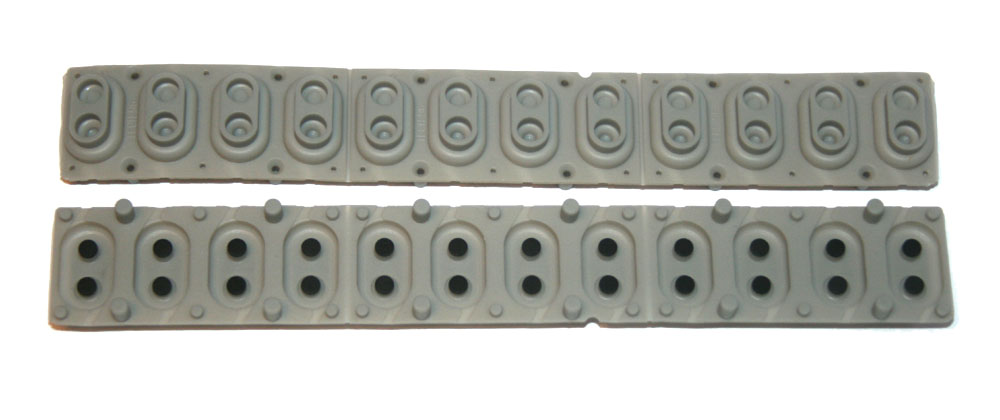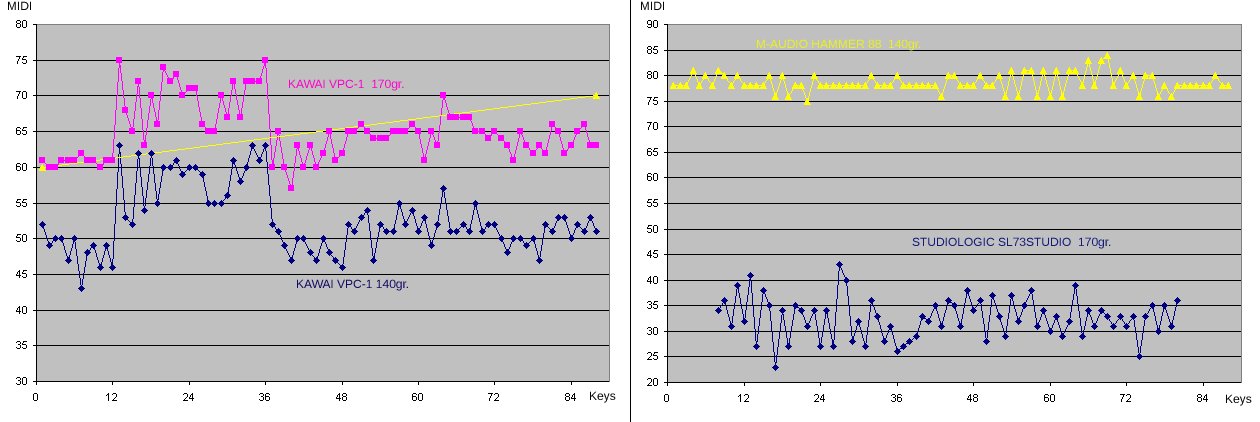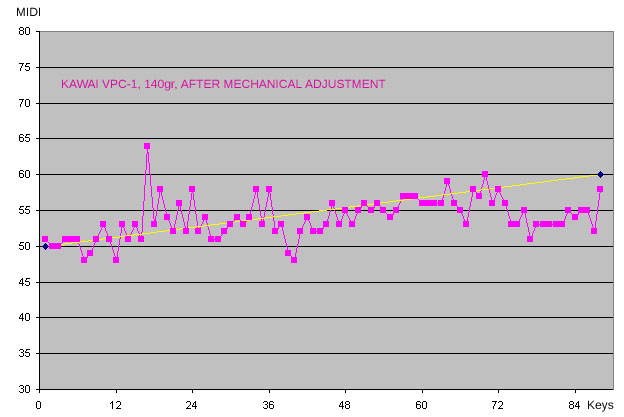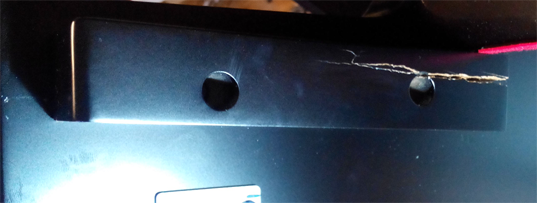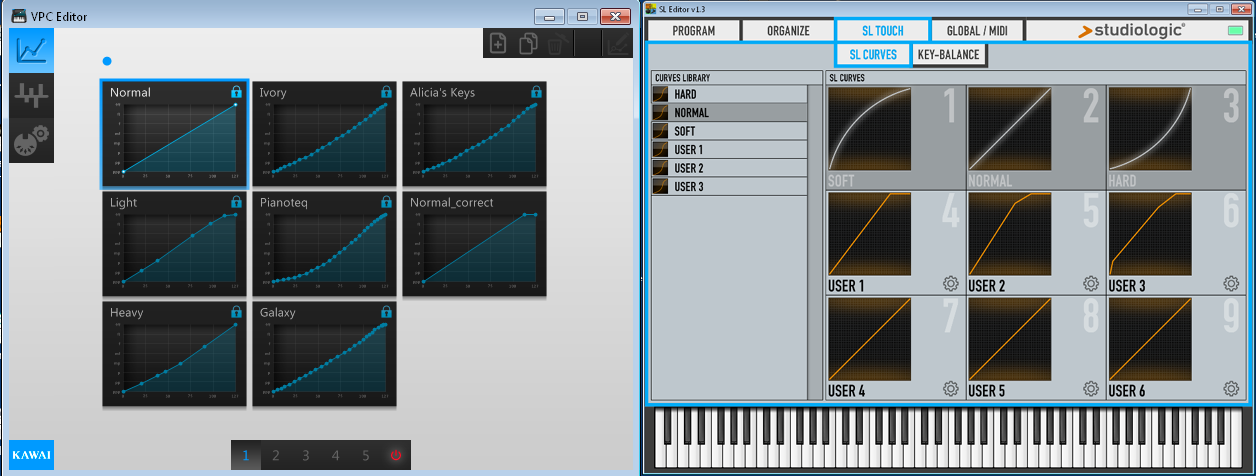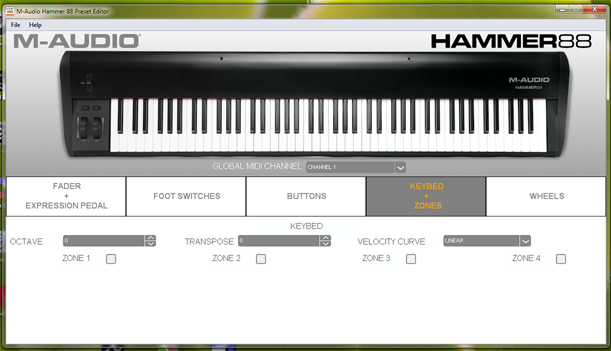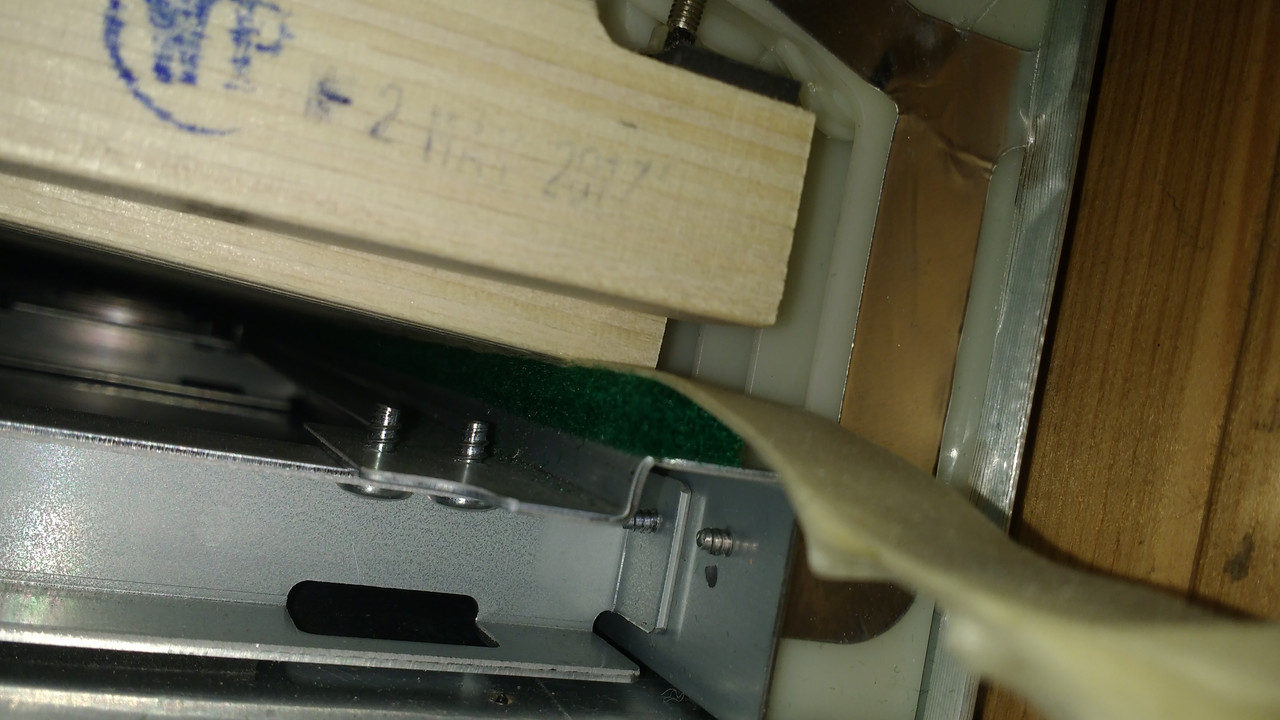Re: Kawai VPC1 faulty key weighting
groovy wrote:gasparka wrote:What exactly do you mean by the "rubber strip", i am assuming the rubber around the switch logic?
Hello again,
probably rubber contact strip is more precisely (though it seems to be silicone with graphite to me). One example from an unknown keyboard:
The VPC1 has three contacts instead of two per "bubble" and I'm not sure, if it are twelve in a row. I think so, because the Kawai ES8 has twelve per strip and the arrangement is from A to Ab in each octave. -
What do you mean with "key dip difference"? Do some keys go down to 11 mm and some to 12 mm, just for example?
Are those balance rails under the wooden keys also segmented to units of 12?
I will take a look at the rubber strips and balance rails this weekend. Key dip - basically yes, actually i measured the hammer resting distance from the "strings", same thing.
@MeDorian
I agree that losing soft notes is worst and uneven key dip also quite bad, so probably high notes must go
I think so, you might still be ok and have good high value triggering also
